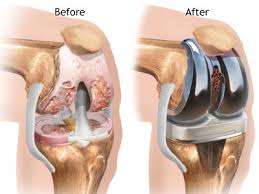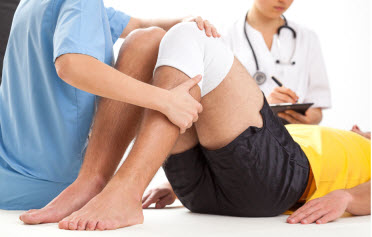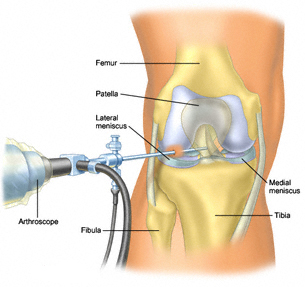
Knee replacement surgery
Knee replacement surgery also known as knee arthroplasty is procedure to replace the weight-bearing surfaces of the knee joint to relieve the pain and disability of osteoarthritis. It may be performed for other knee diseases such as rheumatoid arthritis and psoriatic arthritis. The procedure has been proven to help individuals return back to moderately challenging activities such as golf, bicycling, and swimming. Total knees are not designed for jogging, or sports like tennis and skiing (although there certainly are people with total knee replacements that participate in such sports). Knee replacement is a routine surgery performed on over 600,000 people worldwide each year. Over 90% of people who have had Total Knee Replacement experience an improvement in knee pain and function.
What is the cause of knee joint disintegration?
One of the major reasons that affect the knee joint and hinder routine activities is Arthritis. The slowly wearing condition of the tissue on the ends of the bones leads to reduction of joint space, severe joint pain, regular shifts in bone movement and friction in the exposed bone surface. There are three types of arthritis:-
Osteoarthritis
Osteoarthritis occurs from ‘wear and tear’ and is the most common reason for the total knee replacement. It usually occurs after the age of 50 and is a genetic problem. When the tissue covering the bones softens and wears away, the bone began to rub against each other and leads to severe pain.
Rheumatoid Arthritis
When the tissues surrounding the bone releases excessive fluid due to inflammation, it causes damage to cartilage and other parts of the joint and causes pain and stiffness.
Traumatic Arthritis
This type of arthritis usually occurs after a serious knee injury. Due to the knee fracture, the connective tissue and the tissue covering the ends of the bone wears away, resulting in pain and stiffness.

There are two main types of surgery, depending on the condition of the knee:
•Total Knee Replacement (TKR) – both sides of your knee joint are replaced
• Partial (half) Knee Replacement (PKR) – only one side of your joint is replaced in a smaller operation with a shorter hospital stay and recovery period
Knee surgery is recommended for older people, although adults or teenagers of any age can be candidates for the procedure, since they are physically active and will more rapidly wear the joint out. The weight, gender, or age of the person is never a factor when considering knee replacement surgery. When considering the option of knee replacement surgery, doctors take into account a number of symptoms:
• Severe knee pain or stiffness: Do symptoms seriously undermine the patient's ability to carry out everyday tasks and activities, such as walking, going upstairs, getting in and out of cars, getting up from a chair, etc?
• Moderate but continuous knee pain: Is pain present while sleeping or resting?
• Chronic knee inflammation and swelling: Does the swelling not improve after taking medications or resting? Do drugs cause unpleasant side effects?
• Knee deformity: Is there is a noticeable arch in the inside or outside of the knee?
• Nothing else worked: The doctor has prescribed medications and physical therapy without any substantial improvement.

Total Knee Replacement : Also called total knee arthroplasty, this surgery is for people who have extensive damage in several parts of their knee. The surgeon removes the diseased cartilage, as well as some of the underlying bone, and then fuses an artificial joint to the bone that remains.
Partial Knee Replacement : If the cartilage in just one of the knee's sections becomes damaged, Mayo Clinic surgeons can sometimes replace just the damaged section instead of the whole knee joint. Recovery is easier than with total knee replacement, but the results may not last as long, because arthritis could develop in other areas of the knee.
Minimally Invasive Surgery : Minimally invasive techniques allow surgeons to replace a knee using smaller incisions. This usually results in less pain and a quicker recovery. But minimally invasive knee replacement requires special surgical training, and it may not work for everyone. Your orthopedic surgeon will determine whether you're a good candidate for the minimally invasive approach.
Bilateral Knee Replacement : Having both knees replaced at once can reduce the overall time spent in rehabilitation following surgery, but it's not recommended for some people, such as those with heart or lung disease.
Rotating Knee Replacement
With the Rotating Knee Replacement, the metal implant installed not only move back and forth but can also rotate inwards and outwards. This procedure has been designed to replicate the rotating motion of a normal knee joint.
Oxinium Total Knee Replacement
In Oxinium Total Knee Replacement, the surgeons treat the knee injuries in young men and women. Owing to their high activity levels, most conventional knee implants last only for 10 to 15 years. Oxinium knee implants offer a durability of 30 to 35 years at at a stretch. These implants are designed of metal composites made up of ceramic and coated with oxygen which made them extremely durable and long lasting.
Benefits and Post operative care
The advantages of Total Knee Replacement are pain relief, improved mobility and improved quality of life. During your stay in the hospital, a physiotherapist will teach you exercises to make your knee stronger. You stay in the hospital will not be more than 6 to 10 days. Usually, patients who undergo half knee replacement have a shorter hospital stay.
How do I make an appointment with Best Orthopedic Surgeon in India?
For further information or free consultation, we request you to fill in inquiry form on the website and send medical reports to info@mymedopinion.com. MymedOpinion assures you that all arrangements for examinations, surgeries, and post-operative recuperation will be ably taken care of.

Mr.Gilbert, Knee Replacement, Nigeria
Mr.Gilbert from Aba, Nigeria who came to India for his knee replacement in India.
Mrs. Kalangwa George, Lung Cancer, Kenya
Mrs. Kalangwa George from Mombasa, Kenya who came to India for her Lung Cancer Treatment in India.
Mrs. Elisabeth, Breast Cancer Surgery, Nigeria
Mrs. Elisabeth from Kano, Nigeria who came to India for the Breast Cancer Surgery.
Mr.Tselmeg, Kazakhstan, Spine Surgery
Mr.Tselmeg from Astana, Kazakhstan who came to India for the Spine Surgery
Mr. Stephen Okafor, Spine Surgery, Nigeria
Mr. Stephen Okafor from Onitsha, Nigeria who came to India for the Spine Surgery
Mrs. Asiata Nofiu, Laparoscopic Ovarian Cystectomy , Nigeria
Mrs. Asiata Nofiu from Lagos, Nigeria who came to India for the Laparoscopic Ovarian Cystectomy
Mr. Alhassan Osman, Prostate Treatment, Tanzania
Mr. Alhassan Osman from Mwanza, Tanzania who came to India for the Prostate Treatment
Mr. Okubowa Babatunde , Heart Surgery , Zimbabwe
Mr. Okubowa Babatunde from Harare, Zimbabwe who came to India for the heart hole surgery